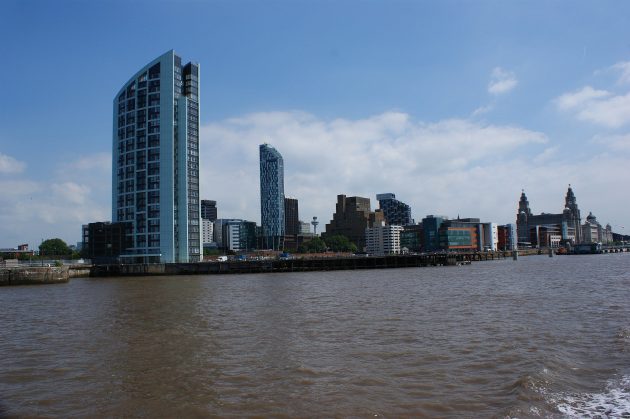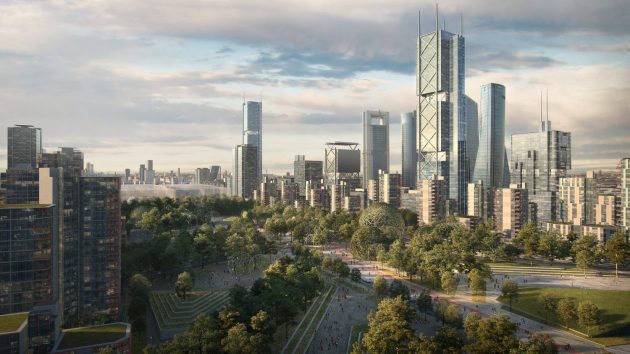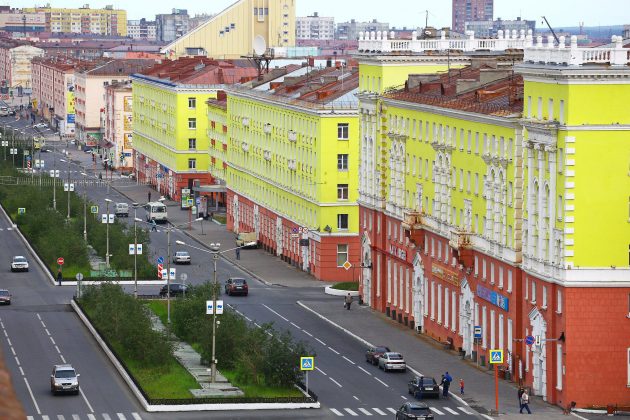The development of former industrial zones is relevant for many cities in the world. As international practice shows, if this process is approached comprehensively, then once depressed territories can become centers of attraction for local residents and the business community. Moreover, the most successful projects in this segment have long become a kind of visiting cards of the cities in which they are implemented.
Rotterdam, Holland
Many who find themselves in Rotterdam for the first time immediately admit that the city is a true fairy tale. New buildings with modern architecture look harmoniously against the backdrop of cultural heritage sites.
A couple of decades ago, Rotterdam was an industrial area. The history of the city is closely connected with the development of the port industry in the Netherlands: a huge number of docks and infrastructure were located here, which provided the enterprises of this industry. Experience shows that single-industry towns do not have a very bright future, both in terms of urban development and attracting highly qualified specialists. The wise authorities of such cities are trying to improve the situation. This is what happened with Rotterdam.
First of all, the local authorities began to develop the industrial zones that were liberated as a result of the transformation of the port industry, which occupied most of the city. One of the main ideas of the local government involved in the project of redevelopment of former industrial sites of architects, city planners and urbanists was the creation of green areas. For example, Dakpark, which is now popular with residents and guests of Rotterdam. This park is fundamentally different from those we are used to. It is located on the roof of a shopping mall. There is a huge greenhouse and space with fountains, benches, a barbecue area and an observation deck. The roof flows smoothly into the hillside. There is a playground and a vegetable garden for local residents, where they grow vegetables and fruits. The park, opened in 2013, was created to provide local residents with a recreational area within walking distance.
Moreover, green zones created in cities may in the future have a tangible effect on city budgets.
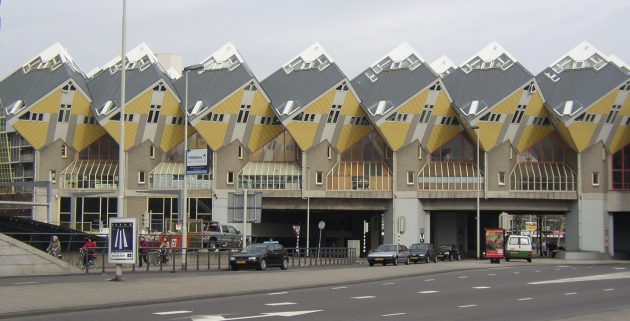
Liverpool, UK
British Liverpool can also be included in urban studies textbooks. This city, like Rotterdam, was at one time a continuous production area, but in a post-industrial society, local authorities were among the first to think about repositioning the city. It all started with the redevelopment of Albert Doc.
This dock, covering more than 1 million square meters. m, was once the largest in the UK, and is a symbol of prosperous Liverpool. In 1972 it was closed to ships and remained abandoned until the 1980s. In 1988, the authorities decided to create a creative cluster there: its development began with the opening of the Liverpool Tate gallery. The city administration, seeing the positive reaction of local residents, decided to develop the creative industry – the gallery became its core. Representatives of related professions have moved to Liverpool.
A great success was the creation in 1999 of Liverpool Vision, the UK’s first urban regeneration company. Projects include a new city museum and Liverpool ONE, built on the site of a former industrial area. The latter object, by the way, has become the hallmark of Liverpool: by its functional purpose, it is a huge shopping center, but in fact it is a recreational area with places for recreation, cultural institutions and even golf courses. Its creation led to the development of neighboring territories, which were also in a depressive state.
The efforts of the authorities and city planners were not in vain. In 2008, Liverpool was awarded the title of European Capital of Culture, and high-ranking urbanists did not skimp on epithets, comparing the city to “a phoenix that rose from the ashes.”
But already today, the “Liverpool model”, based on the support to a large extent of representatives of the creative industries, demanded a rethinking. Liverpool is classified as an emerging creative cluster with a large number of participants, but with a low survival rate of the creative business. The reason is in the very structure of this industry: as a rule, large companies survive, and the satellite counterparties around them quickly cease their work.
According to Liverpool urbanist Jessica Greenfield, reliance solely on the creative industry is now forcing the Liverpool authorities to reprogram the algorithms for further action.
To do this, Liverpool has all the possibilities: real estate objects built on the site of former docks and other industrial areas are quite multifunctional and can accept residents from among the companies working in the IT and Big data sectors.
Pittsburgh, USA
Once an industrial heavyweight, Pittsburgh was powered by coal and steel. But now the city has changed beyond recognition and has become one of the most comfortable for life in the United States.
Back in the middle of the last century, the lanterns worked day and night, because the smog obscured the Sun.
The city looks completely different today. Clean streets, lots of greenery. Instead of heavy industry – banks and IT companies. The clean energy sector alone employs 13,000 Pittsburgh residents. Business representatives believe that this city is a great place for business projects.
The first step in this direction was the demolition of the Jones and Laughlin Steel Company smelters in the northern part of the city and the construction of a High-Tech Center in their place. The center has become a business incubator for many high-tech companies that have decided to develop their production in Pittsburgh. The attraction of new companies was facilitated by the powerful educational potential that was laid by the industrialist Andrew Carnegie, who first founded the Technical School in Pittsburgh, and then the first university.
The social structure of employment in Pittsburgh has also changed. The city has changed its image from a blue-collar city to a white-collar city: Knowledge-intensive industries are becoming more popular among foreign migrants who come to Pittsburgh in search of work. Local authorities promote the attraction of qualified foreign specialists, including through the creation of special agencies. The city has every chance to continue its success in the future, increasing deindustrialization.
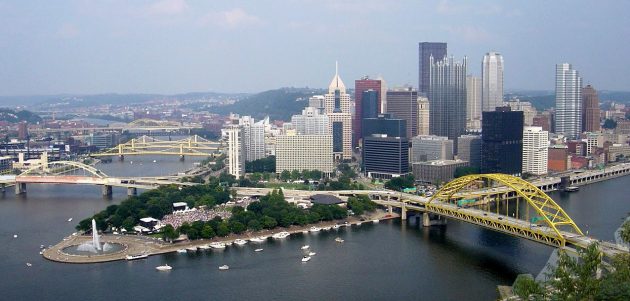
Madrid, Spain
Spain is another country that has proven that the development of former industrial zones can bring significant dividends. A prime example is Barcelona. Prior to the 1992 Olympics in the Catalan capital, the city was a constellation of production sites. Even on the coast of the now famous beach in the Barceloneta area, there were docks and fishing workshops. Now this city is the center of attraction for tourists from all over the world and the standard of urban planning policy. The Summer Olympics almost 30 years ago helped reform his image.
The situation in another Spanish city, Bilbao, developed approximately according to the same scenario. True, the reason for the transformation there was not the holding of a world-class event, but the urgent need to stop the migration of the population, especially from among highly qualified personnel. In the post-industrial era, the city stagnated and could turn into a depressed area with dozens of abandoned factory sites. Bilbao is now one of the centers of international architecture: during its transformation, the best proposals of city planners were used. Now the capital of the Basque Country is a synthesis of cultural, tourism institutions and related industries, as well as the IT industry and startups.
Today is Madrid’s turn. One of the largest projects in Europe for the reorganization of an industrial zone has started in the Spanish capital. This is the Madrid Nuevo Norte project. On the site of the former railway sedimentation tanks, a marshalling yard and access roads, a modern multifunctional building with residential areas and a business hub will be located. According to the plans of the authorities, 2.7 million square meters should appear on an area of 300 hectares of various real estate: 11.7 thousand apartments, 348 office buildings. The planned infrastructure will create up to 241.7 thousand new jobs, which is an urgent issue for Spain with its chronically high unemployment rate. A large part of the territory – 45 hectares – is allocated for green spaces, including parks and squares, which meets the principle of sustainable development of the urban environment. The total investment is estimated at € 1.75 billion.
Norilsk, Russia
An amazing city in the Russian Arctic. Norilsk is the northernmost city in the world with a population of over 100 thousand people and one of the coldest cities on the planet. Still cold. The climate here is harsh, it is winter seven months a year, and h3 winds blow.
The construction of a large city in permafrost conditions was considered by many to be a fantasy, but the project became a reality. Norilsk now intends to make another leap into the future. A large-scale renovation was announced here and architects and the best bureaus from all over the world were invited for this. Now applications are still being accepted for an open international competition to create a new architectural concept for Norilsk. The project involves the emergence of new houses, infrastructure and public spaces. And the world will receive a unique case of creating a city of the future beyond the Arctic Circle.
According to all the rules of the competition, 27 participants submitted applications: 12 individual applicants and 15 companies, a total of 73 companies. The geography of the participants is extensive – 13 countries, 22 cities. Applications of architectural firms from Russia, Great Britain (London), Denmark (Copenhagen), Belarus (Minsk), China (Changchun), Turkey (Istanbul), India (Mumbai), USA (Charlottesville), Canada (Toronto), France (Paris and Charenton), the Netherlands (Utrecht), Sweden (Stockholm) and Norway (Tromsø and Bodé).

